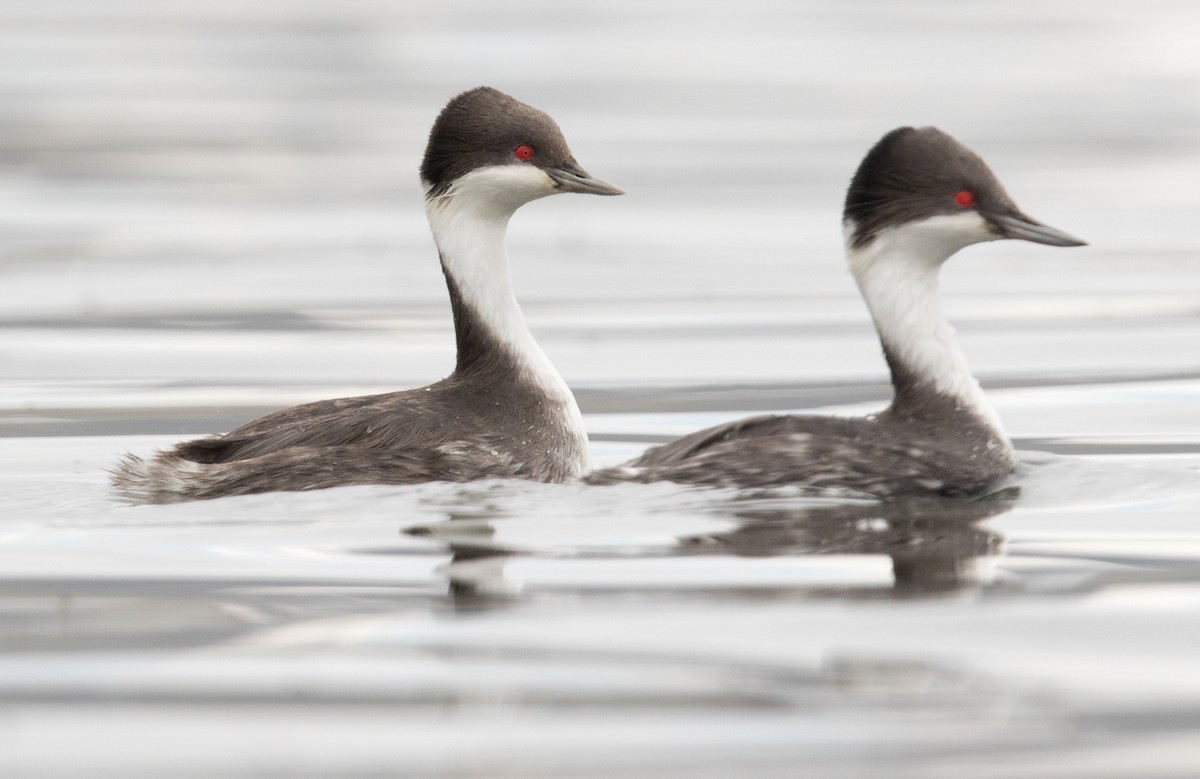Junin Grebe
A species of Typical Grebes Scientific name : Podiceps taczanowskii Genus : Typical Grebes
Junin Grebe, A species of Typical Grebes
Botanical name: Podiceps taczanowskii
Genus: Typical Grebes
Content
Description General Info
 Photo By Lars Petersson
Photo By Lars Petersson Description
With a size of approximately 35 cm, the Junin grebe has a dark grey crown extending down the back of its neck to a black back. It has white lower parts of the face, neck and underparts, with a narrow grey bill. Perhaps the most striking feature is its bright red eyes. On the side of the head of adults there are silvery grey feathers, which are absent on non-breeding adults and juveniles. Its calls include melodic whistles doo’ ith, wit, and a longer phooee-th when trying to attract a mate. 
Size
38 cm
Nest Placement
Floating
Feeding Habits
Junin Grebe primarily feeds on small fish and invertebrates, utilizing its excellent diving abilities. Often foraging in small groups, they exhibit synchronized feeding and diving behavior, showcasing unique cooperative hunting techniques.
Habitat
The junin Grebe's habitat is a large, mostly shallow freshwater lake characterized by extensive reed marshes. These marshes can either be continuous or patchy, interspaced with areas of open water. The lake bed has regions covered by dense growths of stonewort. The junin Grebe is particularly associated with the lake's outer sector, frequenting bays and channels near reedbeds during the breeding season, yet it prefers the open waters of the lake during the off-season.
Dite type
Piscivorous
General Info
Feeding Habits
Bird food type
Distribution Area
Junin grebes are endemic to Lake Junin, in west-central Peru. The lake covers approximately 140 km and at its deepest is 10m deep, although most of the lake is less than 5m deep. Around the borders of the lake are substantial reed marshes, where the grebes nest and roost. 
Species Status
Lake Junin has been classed as a national reserve since 1974, which has restricted the amount of fishing and hunting that can take place there. More recently, in 2002, the Peruvian government made an emergency law to place harsher restrictions on water extraction and provisions for cleaning of the lake, but so far this has not been properly enforced. Attempts have been made to translocate the grebes to a lake just north of Lake Junin, however gill nets used to catch rainbow trout in this lake meant it was unsuccessful. Further studies are being carried out to locate other lakes that the Junin grebe could successfully be translocated to. Large fluctuations in water levels, caused by a nearby hydroelectric plant, and water pollution from mining activities have caused the population of grebes to fall from 1000 in 1961 to around 200 in 2007. Contamination of the lake from mining waste products kills the small fish that are the Junin grebes main source of food. The hydroelectric plant can cause the water level to drop below 5m, which prevents the birds from raising chicks, and can cause damage to the bordering reed marshes. A local organisation, Asociaciόn Ecosistemas Andinos, is working to educate local people about the Junin grebe and the Junin rail – which is also endemic to the lake. The aim is to raise awareness of the issue, and get the mining and hydroelectric plant organisations to understand the issue. 

 Photo By Lars Petersson
Photo By Lars Petersson